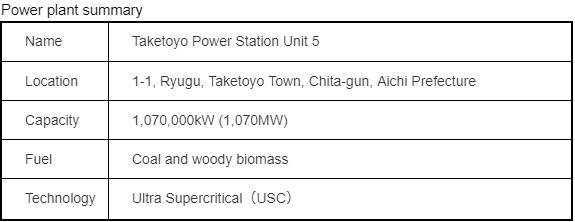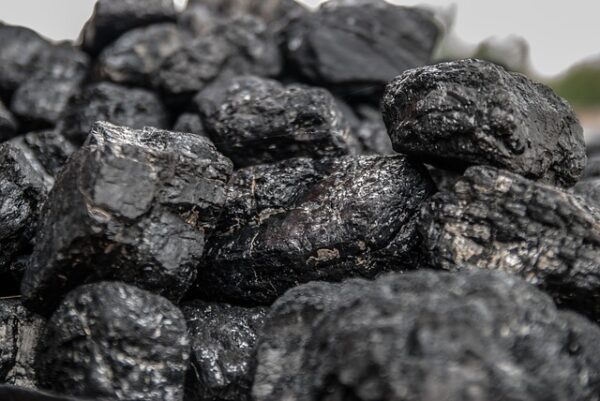On August 5, JERA began commercial operation of the Taketoyo Power Station Unit 5, a new 1.07 GW coal-fired power plant in Taketoyo (Aichi Prefecture). Prior to the start of operations, on July 14 the press were shown the turbines for power generation and control room in the facility, and JERA appealed to the public that it could contribute as a power supply to help stabilize the power market amidst the growing noise about its supply and demand crunch.

Even if it contributed to the tight power market now, what does this mean for the future of Japan’s energy supply, and for that of the town of Taketoyo? Three questions stand out about the start of Taketoyo Power Station Unit 5.
- Even with combusting 17% biomass, Unit 5 will still emit a larger amount of CO2 than the three decommissioned units (Units 2-4) combined. How can this be considered “reducing environmental impact”?
- While starting new coal-fired units like Taketoyo Unit 5, how can the Japanese government achieve the internationally-agreed goals of a coal-free electricity sector by 2035 and Net Zero by 2050?
- The town of Taketoyo has signed up as one of the “Zero Carbon Cities in Japan”. How can it align with this commitment?
The Taketoyo Unit 5 construction plan was announced in February 2015 to replace 3 units (Unit 2-4) that started operation in 1972. Those 3 units, with a total output of 1,125MW, were decommissioned in March 2016. The “Simplified Assessment for Improved Replacement” was applied to Unit 5, as it was considered to have less environmental impact than Units 2-4, which were operated by burning heavy/crude oil. Construction began in April 2018, and it started commercial operation in August 2022.
While some environmental impacts, such as air pollution, will be reduced compared to the old units, Unit 5 is estimated to emit even more CO2. JERA insists 900,000 tons of CO2 can be reduced per year by combusting with wood biomass, and it is a wonder why most media outlets focus on that point instead of noting that the new unit will still emit more CO2 than the previous three units combined.
Assuming Taketoyo Unit 5 is operated with 80% of an annual facility utilization rate, annual CO2 emission is projected to be approximately 5.69 million tons. Co-firing with 17% wooden biomass in its fuel can cut down its CO2 emissions by 900,000 tons annually, but this is compared to burning only coal. This means that Taketoyo Unit 5 emits approximately 4.79 million tons of CO2 annually. The CO2 emissions from Unit 2-4 were estimated at 0.93 million tons per unit, meaning Unit 5 on its own would emit about 2 million more tons of CO2 per year than the combined emissions of the previous three units. When thinking about CO2 emissions, it is hard to say that Unit 5 is an “improvement”.
Taketoyo Unit 5 is one of the largest coal-fired power stations in Japan in terms of output per unit, and it is assumed it will operate for more than 25 years into the future. Japan has set a target of reducing coal power to approximately 19% of its energy mix in 2030, as well as to achieve zero CO2 emissions from thermal power plants by 2050. Despite these goals, no decommissioning (phase-out) plan for existing coal-fired power plants has been disclosed at this time. It is unacceptable to start operation of a new coal-fired power plant with such high CO2 emissions without any sort of concrete reduction plan.
Moreover, at June 2022’s G7 summit, Japan agreed to the joint statement to phase out coal-fired power generation. Even though Taketoyo Unit 5 uses Ultra Supercritical (USC) technology that is more efficient compared to coal plants in other countries, it is still burning coal and emitting large amounts of CO2. While the International Energy Agency (IEA)’s report that developed countries must achieve a coal-free power sector by 2035 is being referenced worldwide, starting operation of Taketoyo Unit 5 is a clear step backwards.
Finally, it should be noted that the town of Taketoyo has declared itself one of the “Zero Carbon Cities in Japan”. The operation of Taketoyo Unit 5 is not consistent with Taketoyo Town’s target. How does the local government intend to deal with the CO2 emitted from Unit 5?
Related Link:
【News】 Local Group Conducts Resident Survey on Taketoyo Power Station (June 3, 2022)

